The Chain Bridge was originally lit with oil lamps from 1849, not so brightly, the constant complaint was that the bridge was dark in the evening. Of course, it was not as if Pest and Buda were bathed in a flood of light, since then the city streets were only scarcely lit by oil lamps. However, while anyone on the street could bring a candle or an oil lamp, burning material, i.e. a burning candle, could not be used on the bridge (even smoking was forbidden) as a significant part of the bridge was made of wood soaked in oil.
In addition, other lighting was used on the bridge on festive occasions. When Franz Joseph visited in 1852, the Chain Bridge Company illuminated the bridge with a very respectable cost of 1,000 forints.
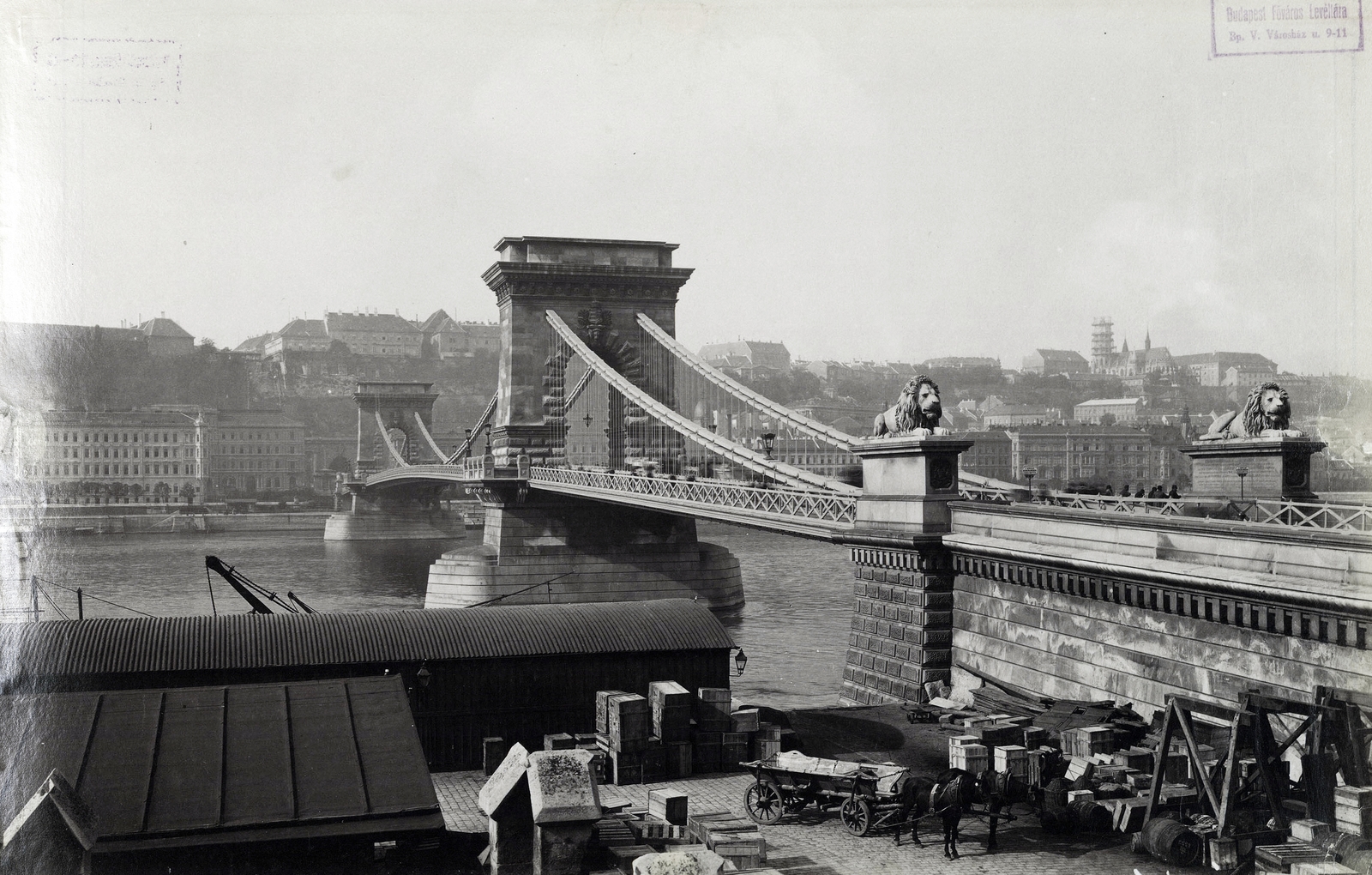
The bridge only equipped with gas lamps back then (photo: Fortepan, Budapest Archives. Reference No.: HU.BFL.XV.19.d.1.07.154)
It improved the lighting situation when gas was introduced to the bridge in 1859, barely three years after gas lamps appeared in Pest. The older oil lamps were converted to gas lighting, and later, after converting the luminaires, three gas flames were lit in them. This improved visibility on the bridge, but not significantly, it was still a constant complaint that the bridge was dark. The front page of Bolond Miska wrote about gas lighting on 12 February 1862:
“The city of Buda has also signed a contract with a contractor for the lighting of the suburbs. The Chain Bridge, not satisfied with earth contractors, will keep its current contract with the moon next year for the lighting of the bridge. ”
On the Chain Bridge, when the heir to the throne visited in 1881, electric lighting was used for the first time, but at that time the electric lights were only temporarily installed. A decade and a half later, in 1896, electric lamps, which were already intended to be permanent, were installed on the bridge, but not exclusively, as 9 arc lamps were installed in addition to the existing gas lighting, with iron gates placed above the track - the common language called them gallows - and the lamps hung from those.
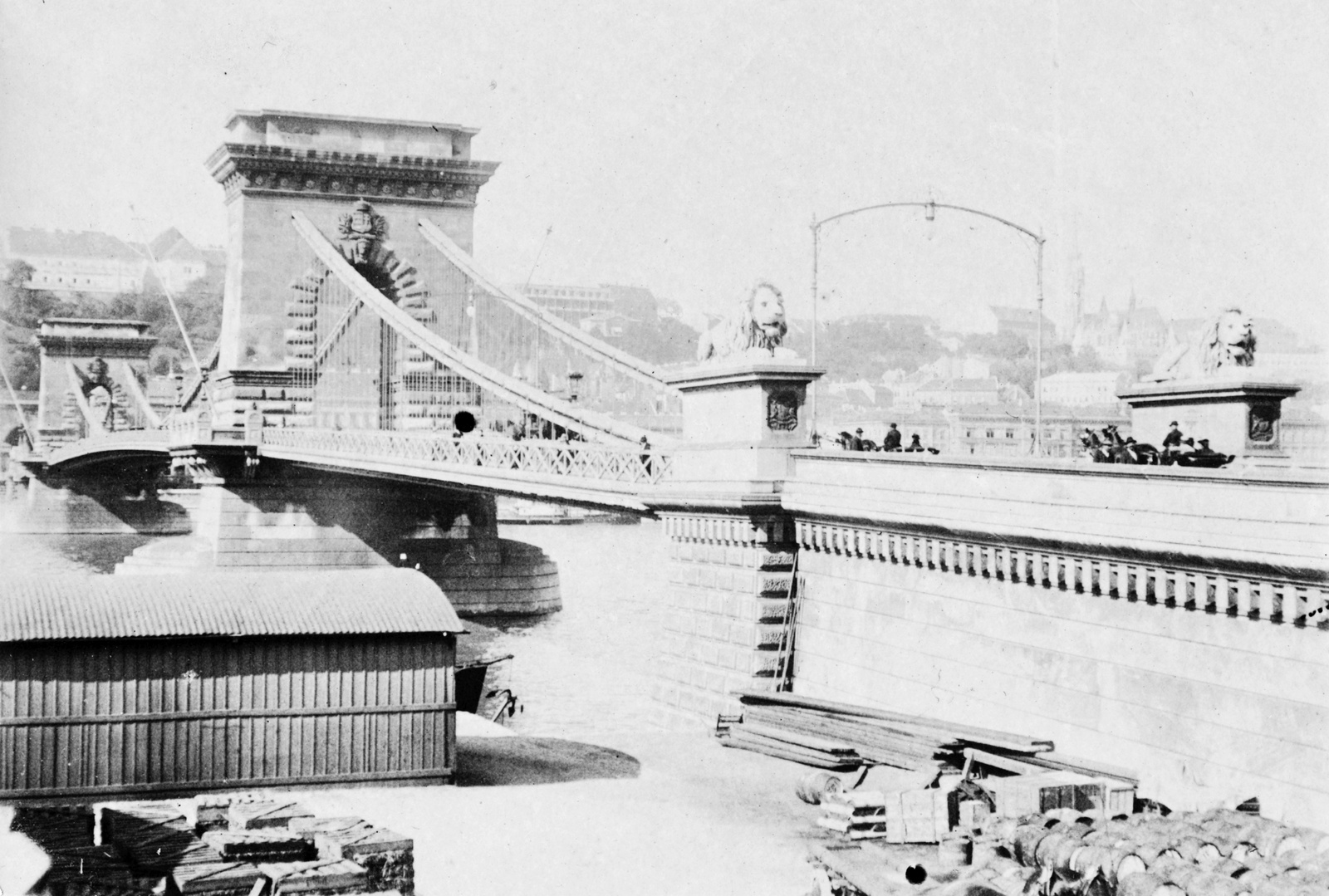
The gates on the Chain Bridge held the electric arc lights (photo: Fortepan / No.: 59736)
However, during the reconstruction of the bridge in 1914–1915, only electric lamps were used. The contracts stipulate exactly the intensity of the lighting to be installed on the bridge and in the different parts of the bridge, in the customs houses, in the chain channel, and in the chain chamber.
Since then, three-branch lamps have been used on the bridge, but during the war, due to the lack of non-ferrous metals, only some of the lamps were connected to the electricity network, all of them only operated from the 1920s.
The intensity of the lighting was also raised in 1936, when the capital and the state agreed that the brightness should be increased from 2,880 watts to 7,200 watts. This was necessary because the condition of the lamps of the Chain Bridge was described by Pesti Hírlap on 5 December 1936 as follows:
“The lighting of the Chain Bridge was a very sad sight. The lighting has been getting worse and worse ever since. The lights are missing, only every second and third works, most of them are not installed or the socket is rusty. The glass covers are broken, dirty, no one maintains them, the faint burners barely flicker under the blackened glass. ”
After World War II, when the bridge was rebuilt, completely new lamps were placed on the bridge, in principle based on the old pattern before 1914, ie the side branches were not returned to the candelabra. The decoration of the columns of the candelabra also changed, not the crowned but the Kossuth coat of arms was installed, because the Kossuth coat of arms was in force at the time of the order.
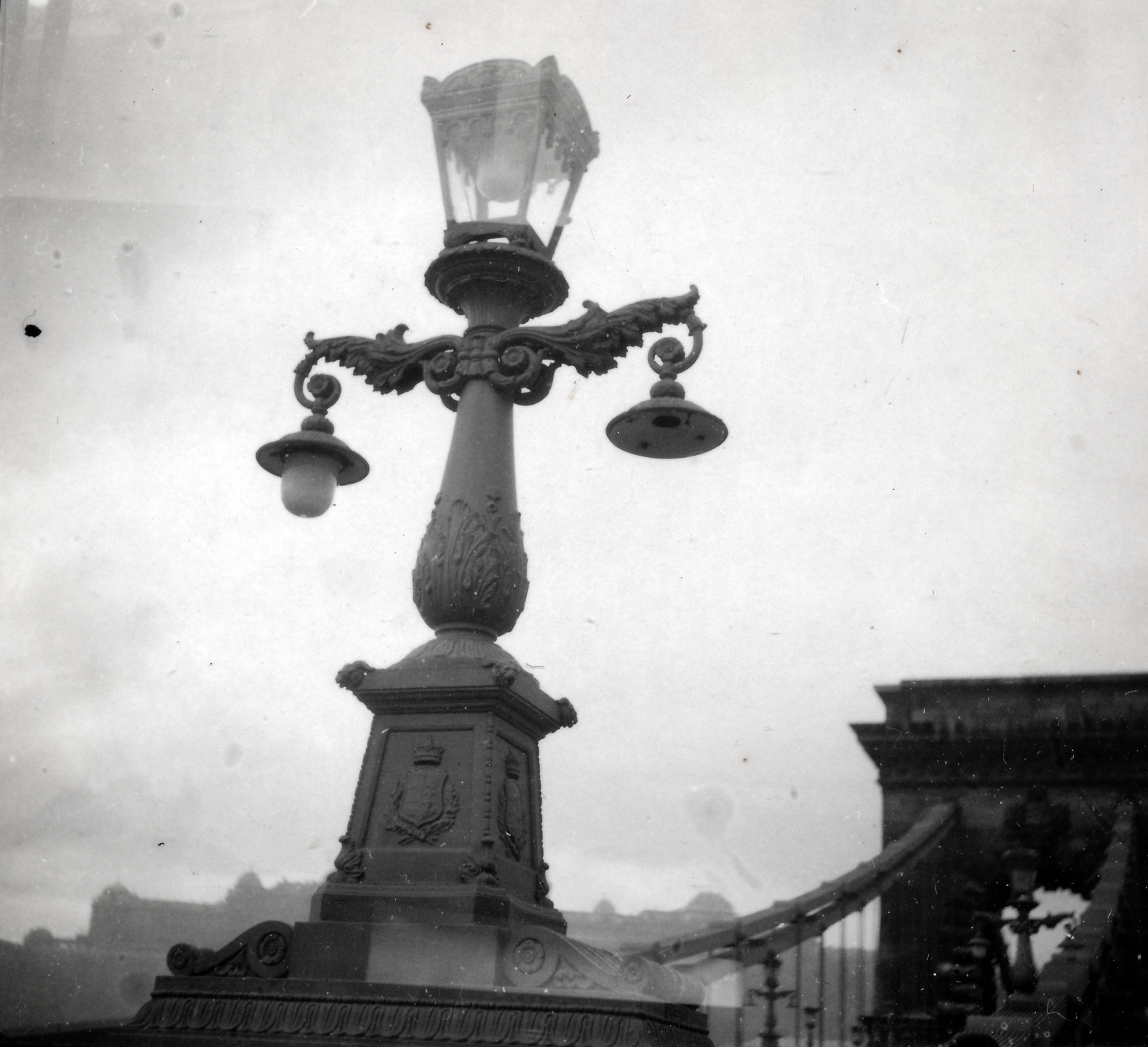
Candelabras used between the two world wars (photo: Fortepan / No.: 24541)
The lighting on the bridge was also improved in 1973 and 1986. Prior to the 1986 renovation, the lighting intensity was again found to be insufficient, so experts examined several solutions in 1985, and the company that renovated the electricity network recommended that the solution used on the pre-war bridge be restored, ie the lamps should be fitted with two side arms, and 400-watt sodium lamps shold be placed on the candelabra head and 150-150 watt sodium lamps on the side arms.
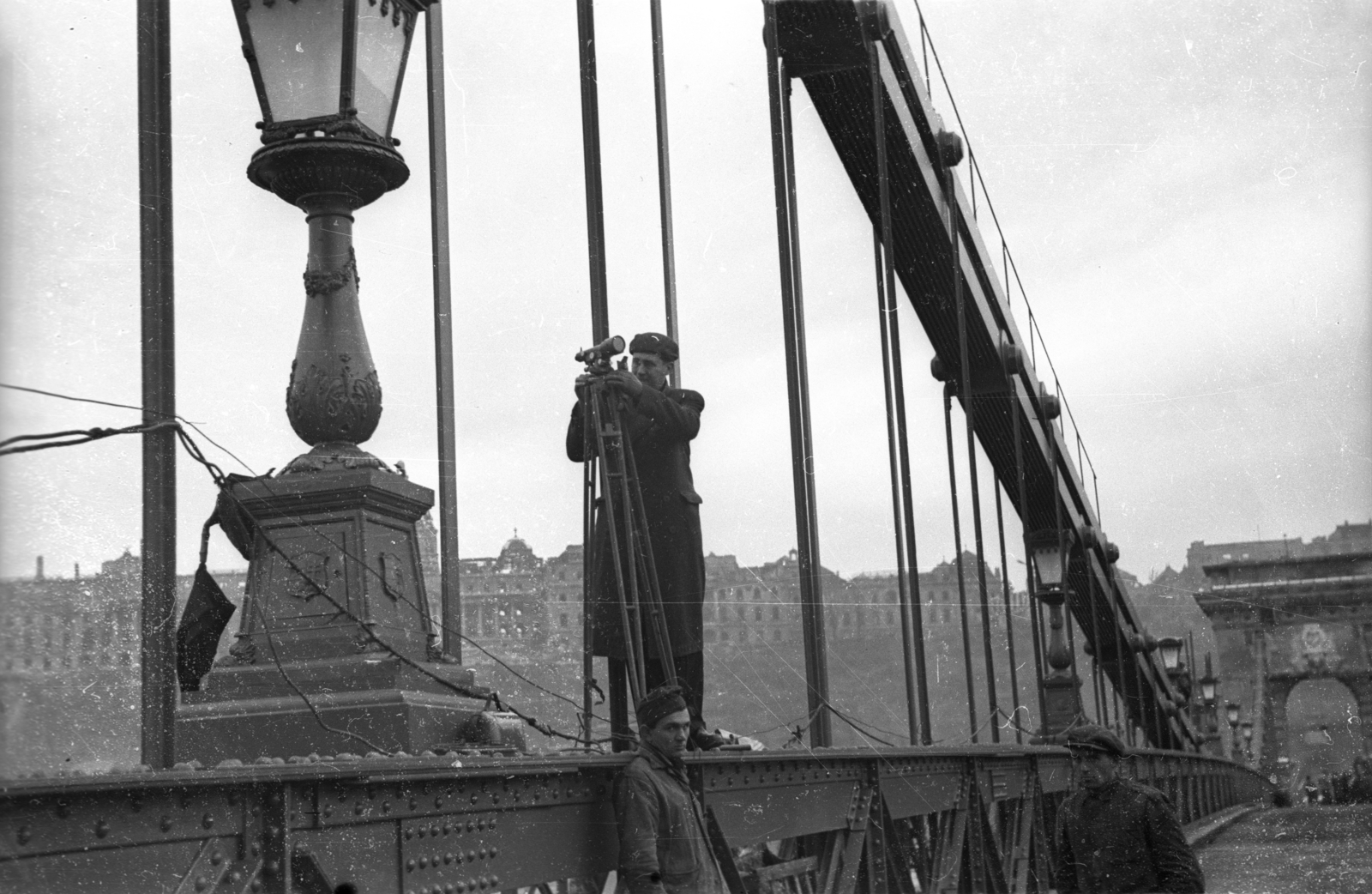
Lamps installed in 1949 (photo: Fortepan, Uvaterv)
A special consultation was held on this, where a specialist from the Monument Inspection stated that the three-pronged candelabra was already a forced solution before the war, which is why it was abandoned in 1948 and should not be introduced now. So they rejected this solution. Better lighting was eventually solved with mirrored floodlights placed in the heads of the candelabra.
In the current renovation, the lamps will be completely replaced, the four original bronze candlesticks will remain, but new ones will be made instead of all the others, based on the ideas of 1914, but equipped with energy-saving LED lights.
Cover photo: The three-pronged lights in 1940 (photo: Fortepan / No.: 128905)

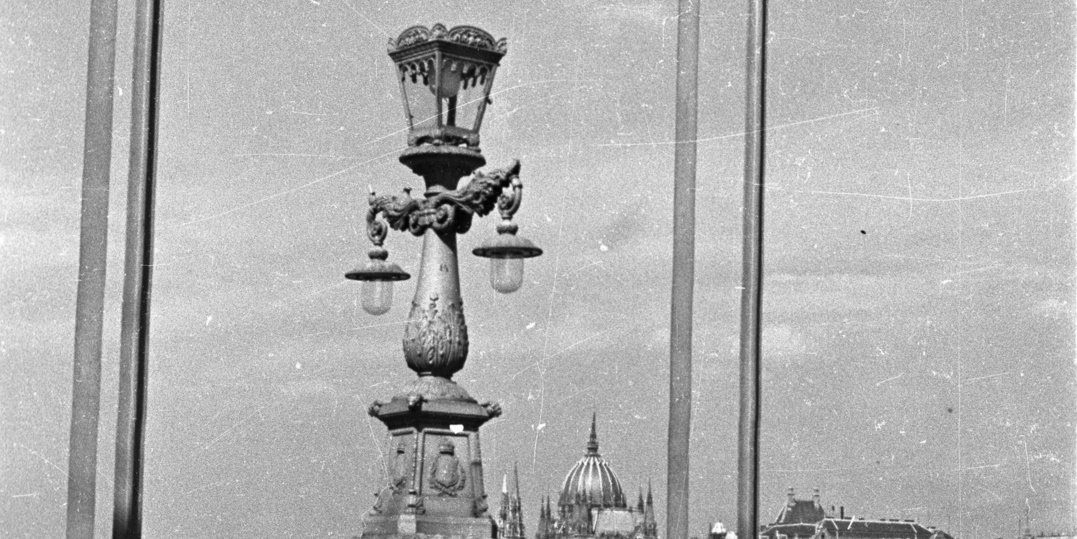
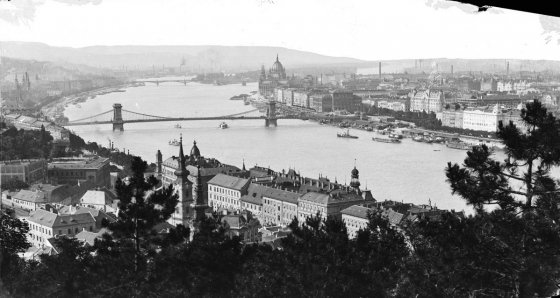




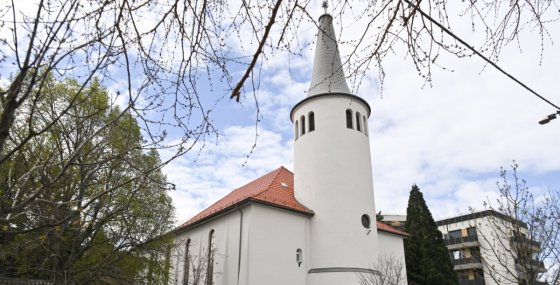



























Hozzászólások
Log in or register to comment!
Login Registration